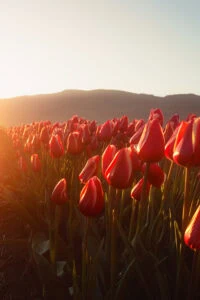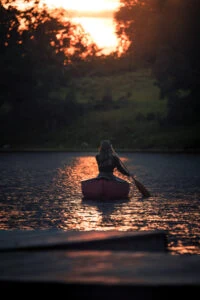The world is full of wonders and mysteries, but few can compare to the ethereal and captivating beauty of the Northern Lights. It’s a phenomenon that has fascinated people for centuries, inspiring countless legends and myths. But seeing it in person is an extraordinary experience, one that can leave you feeling simultaneously insignificant and connected to something much greater than yourself.
We, too, have been chasing the elusive lights for years, but it wasn’t until we ventured to Manitoba that we finally caught a glimpse of them. On a frigid night in Hecla, we found ourselves in the right place at the right time when the Northern Lights revealed themselves to us at last.

The temperature plummeted to -30 degrees with windchill, making the journey to the tip of Hecla Island almost unbearable. We were bundled up in countless layers of clothing, hats, scarves, gloves and even blankets, but the icy gusts of wind still pierced through us. Despite the darkness that engulfed us, we persisted in our mission to catch a glimpse of the Northern Lights and climbed the viewing tower.
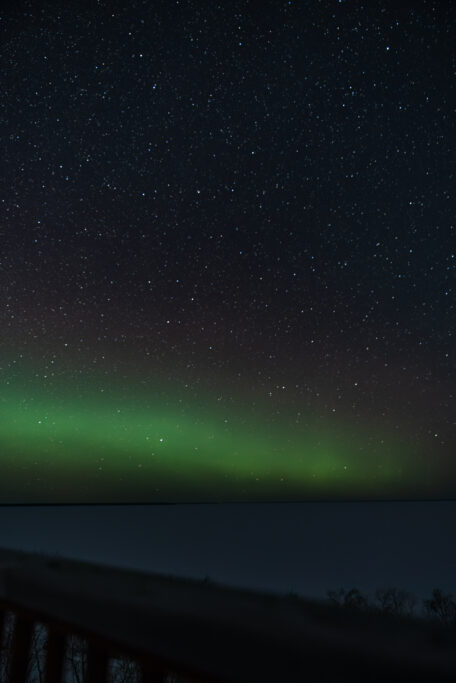
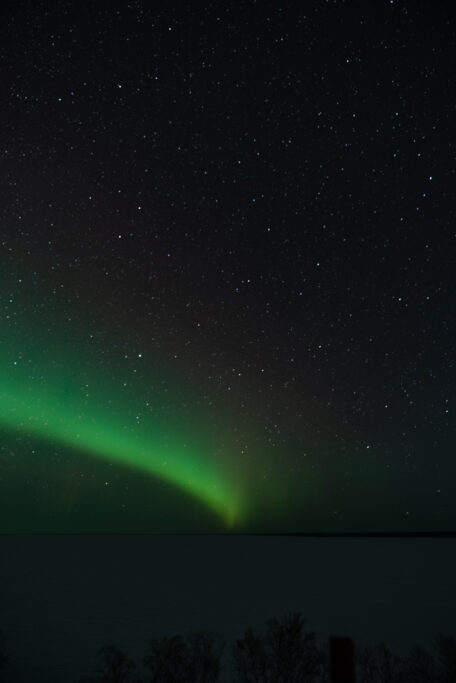
The forecast was promising. A solar flare had erupted two days prior, and all the aurora watch websites predicted high aurora activity. Finally, we were in the right place, at the right time, with clear skies and aurora storm activity.
Related: Looking for other things to do in Manitoba in winter? Read our Manitoba winter guide here.
Above us, the night sky was a breathtaking sight, adorned with thousands of diamond-like stars. It was a stark contrast to the darkness that enveloped us on the ground. Across the frozen lake, a distant gray glow on the horizon signaled the Northern Lights’ arrival, but it was still too far away to appreciate fully. We waited, shivering in the cold, until the glow intensified and illuminated the sky with a magnificent display of dancing lights.
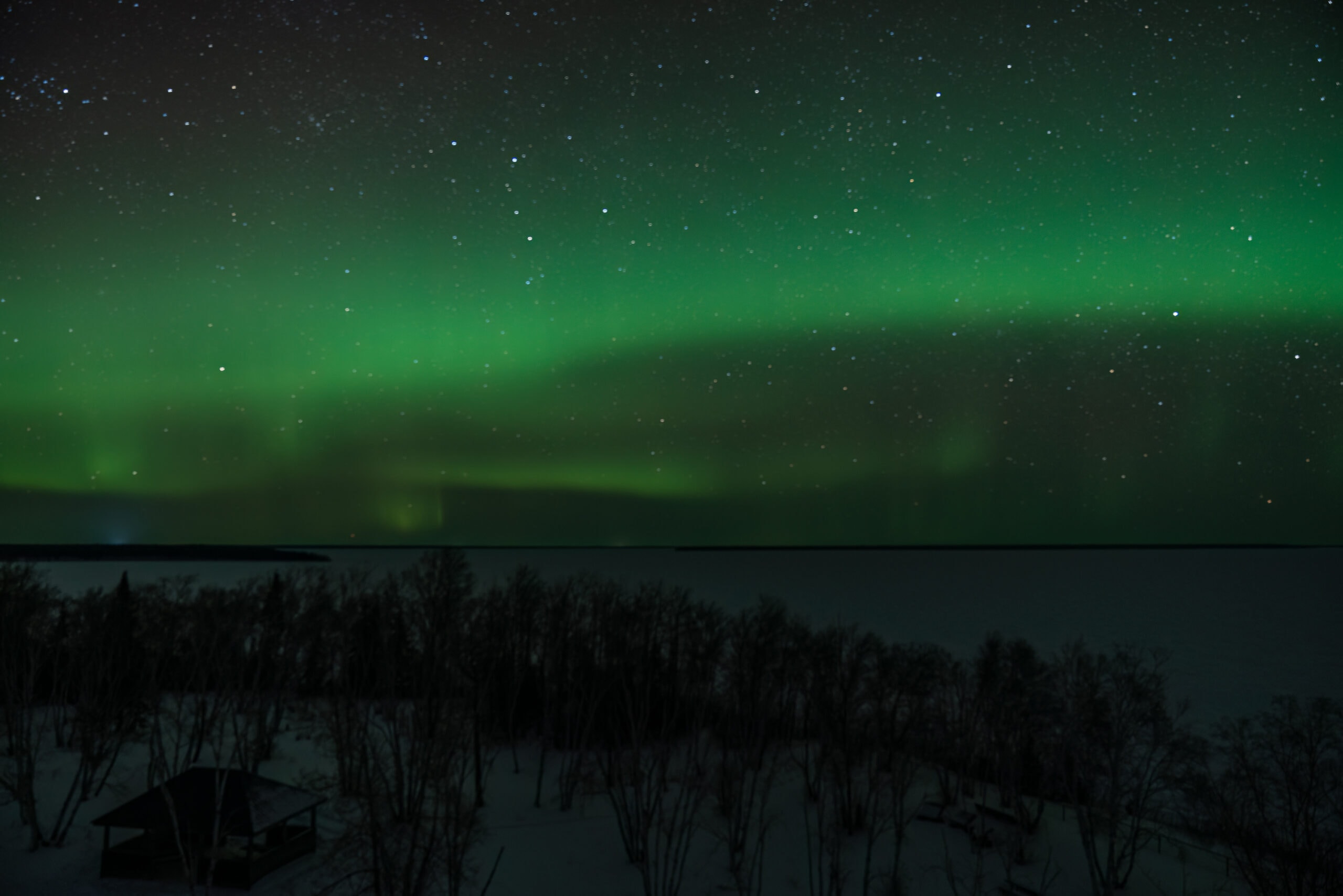
Standing atop the tower, swathed in layers of clothing and blankets, watching the Northern Lights in motion was surreal. The experience filled us with a sense of peace and wonder, as though the world had paused, and we were the sole witnesses to nature’s incredible power.

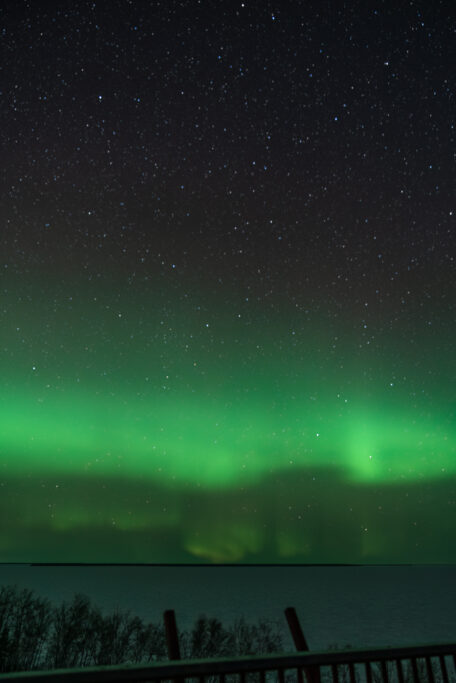
Yet, the cold soon reminded us of its presence, and we huddled together for warmth, our bodies shook with every gust of wind, but we remained transfixed by the display before us.
After an hour, the cold became unbearable. We reluctantly descended the tower, fumbling in the darkness, and trudged back to our car.
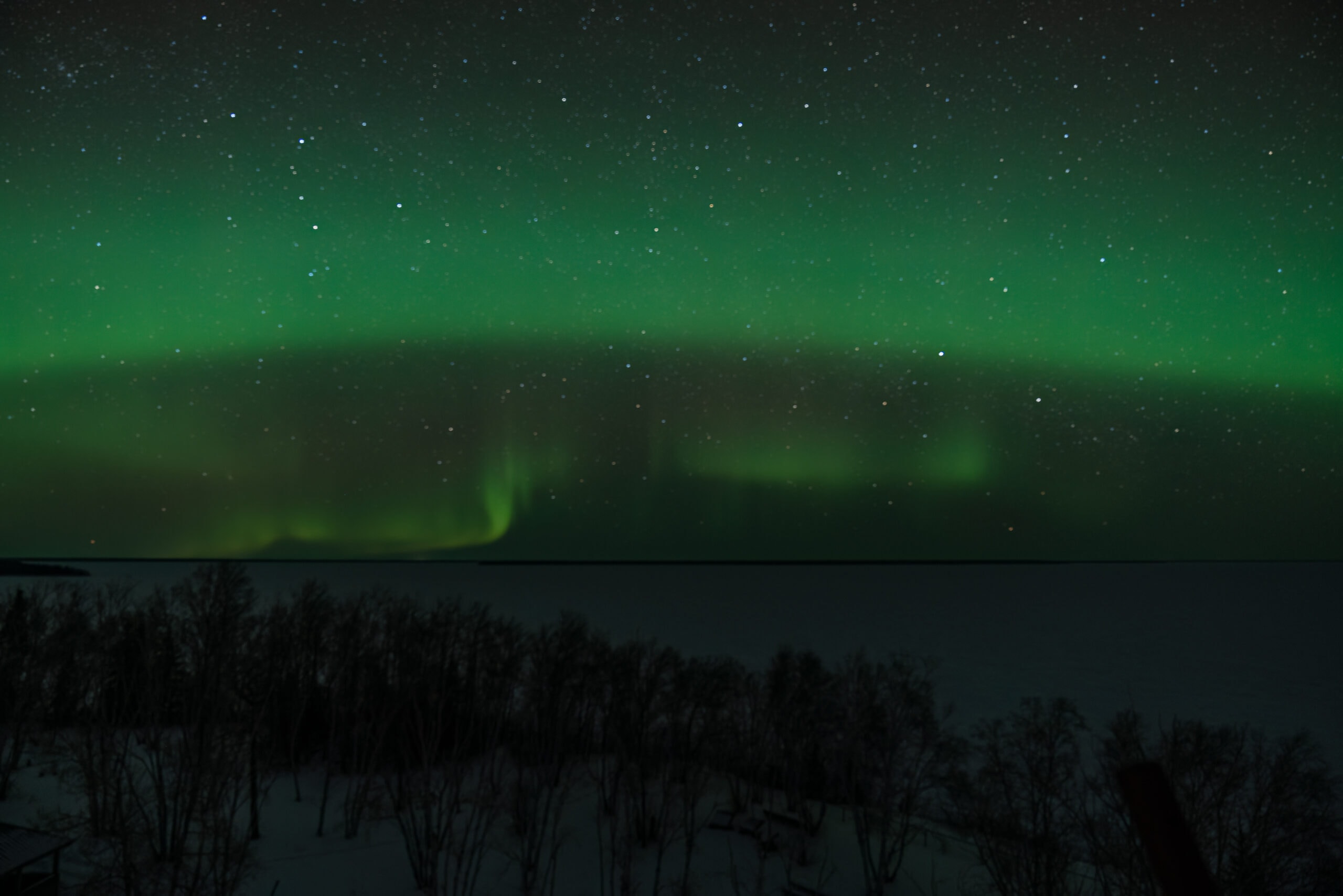
As we drove back to our cabin, the Northern Lights danced in our minds, their ethereal beauty still vivid despite the biting cold. It was a moment that left us in awe of nature’s grandeur, an unforgettable encounter that reminded us of the magic that still exists in the world. For years, we had chased the lights, and finally, on that frigid night in Hecla, we had finally caught them.
Q. Where is Hecla Island?
A. Hecla Island is located in the province of Manitoba, Canada. It is situated in Lake Winnipeg, approximately 180 km north of the provincial capital, Winnipeg. The island is accessible by a causeway from the mainland and is part of Hecla/Grindstone Provincial Park. Hecla Island is a popular tourist destination known for its natural beauty, beaches, and recreational activities such as hiking, fishing and wildlife viewing. In the winter, Hecla Island transforms into a winter wonderland, with activities such as cross-country skiing, snowshoeing, ice fishing and snowmobiling.
Related: Read our winter guide to Hecla Island
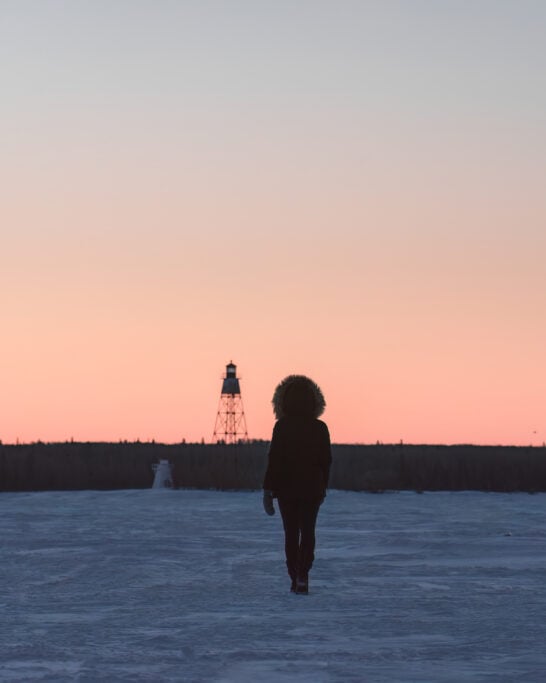
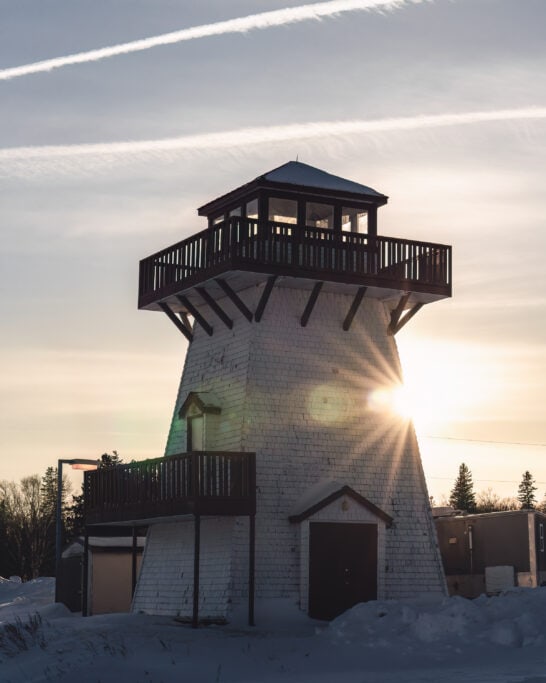

Q. Is Manitoba a good place for seeing the Aurora?
A. Yes, Manitoba is a great place for seeing the Northern Lights. Manitoba is located in the northern hemisphere, close to the magnetic North Pole, which makes it a prime location for viewing the aurora. The best time to see the Northern Lights in Manitoba is during the winter months, between November and March, when the nights are long and dark. The province’s remote northern regions, such as Churchill, Thompson and The Pas, offer ideal conditions for viewing the Northern Lights due to their clear skies and minimal light pollution.
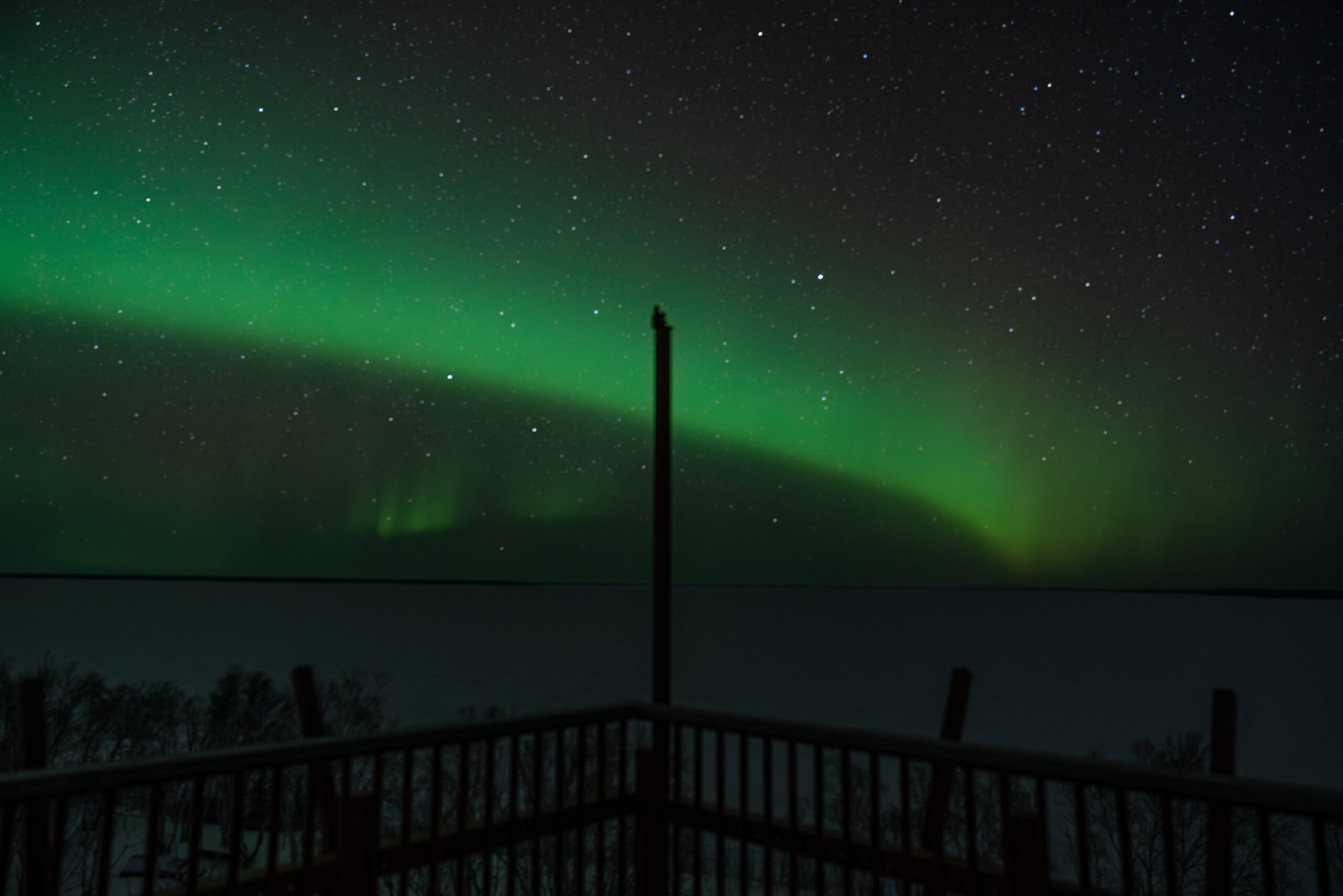
Q. Can I see the Northern Lights in Southern Manitoba?
A. While it is possible to see the Northern Lights in Southern Manitoba, it is less common than in the province’s northern regions. The visibility of the Northern Lights depends on a combination of factors, including the strength of the aurora activity, weather conditions, and light pollution. Southern Manitoba has more light pollution due to its higher population density and urban areas, which can make it more challenging to see the aurora. However, during periods of strong aurora activity, the Northern Lights can sometimes be visible even from southern regions of the province with clear and dark skies. Because we are reaching Solar Maximum, a period of heightened solar activity, we are now seeing the aurora more often in Southern Manitoba, such as on Hecla Island and as far South as Winnipeg.
